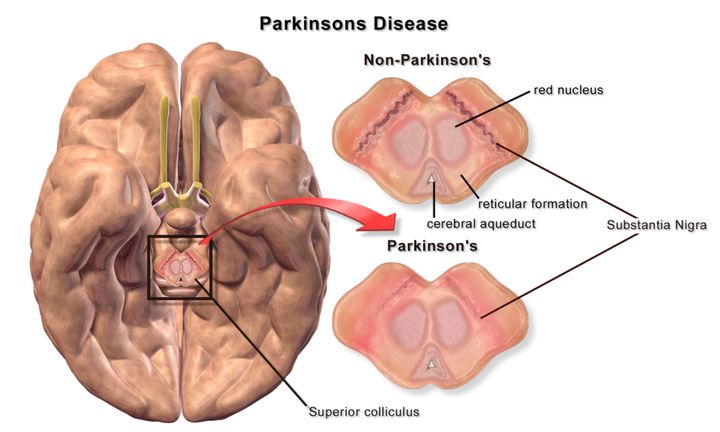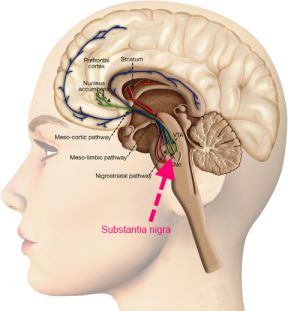A poorly appreciated fact is that about 10% of individuals affected by Parkinson’s disease are diagnosed in the prime of their lives. This results in an extended period of financial burden from medical expenses to manage this debilitating disease. The Affordable Care Act has provided much needed relief to these individuals.

Muhammad Ali, born January 17, 1942
Muhammad Ali was diagnosed with Parkinson’s syndrome (PS) at the age of 42, in 1984, at a time when it was widely believed that Parkinson’s typically occurred in later life. Clinically, Parkinson’s syndrome is distinct from Parkinson’s disease (PD), where the former is characterized by physical manifestations of Parkinson’s disease, such as tremors, rigidity, unstable posture, and slow movements. Although there is still debate on what may have caused Mr. Ali’s Parkinson’s, the fact remains that his symptoms surfaced at a young age - the average age of diagnosis of Parkinson’s is 62.
To the casual observer PS and PD are the same. Parkinson’s syndrome, unlike Parkinson’s disease, is not primarily a consequence of neurodegeneration, although it might progress to neurodegeneration and thus, the individual suffering from what was originally Parkinson’s syndrome, may eventually be diagnosed with Parkinson’s disease.

Partial cross section of a human brain. In Parkinson’s disease, nerve cells in the substantia nigra are progressively lost. These cells normally produce the neurotransmitter dopamine (DOPA) which helps control body movements. Individuals with PD are typically prescribed increasing amounts of a form of DOPA to compensate for the loss of these nerve cells.
In general, we tend to align neurodegenerative diseases with aging because it is difficult to dissociate the concept of “degeneration” from age. “Degeneration” implies decay, and decline; and decay and decline in a biological system is typically correlated with age. But as we have seen in the case of Mr. Ali, and also Michael J. Fox, Parkinson’s can occur well before the average age of 62 - Mr. Fox was diagnosed at the age of 29. As a general rule then, when Parkinson’s is diagnosed in individuals before the age of 50, the disease is called Young Onset Parkinson’s Disease (YOPD).
Because Parkinson’s disease (PD) is more frequently found in older individuals, when symptoms occur in younger individuals they are often overlooked or ascribed to other reasons. Currently, more than 10 million people worldwide live with PD, and about 1 million of them are in the US. According to some estimates, as many as 10% of PD cases are diagnosed before the age of 50 and some as young as 25. One of us, GM, was diagnosed with YOPD at the age of 45. And as has happened with a number of YOPD patients, it took some time before a correct diagnosis was arrived at. This is because of a lack of patient awareness of YOPD, and the tendency of physicians to consider other reasons for PD symptoms, which at an early age are not pronounced. For instance, in GM’s case, it was a rotator cuff tear and frozen shoulder that masked what is a characteristic symptom of PD – a stiff arm that was difficult to move; in unaffected individuals, a normal feature of walking is a complementary motion of the arms.
There are no blood tests or imaging options to diagnose PD, and because of the variability in symptoms from one patient to another being enormous, PD is often called a “snowflake disease”. While some genetic mutations have been linked to PD, only 10% of PD cases appear to have genetic causes, making routine genetic screening also a hit-or-miss diagnostic tool. YOPD has a higher likelihood of being a consequence of genetic factors, although a combination of genetic and environmental factors has not been ruled out. Getting an exhaustive medical history is perhaps more important for PD than most other diseases. YOPD individuals might have no initial motor symptoms and instead have early non-motor symptoms like depression and anxiety, further exacerbating the difficulty in diagnosing the disease.
The cost of medications for PD varies with the severity of the disease, with annual costs of at least $2,500 out of pocket, in other words, after insurance. But while medications are only one part of the financial burden of this disease, indirect costs are also significant and are a consequence of a progressive inability to work. By some estimates, the overall annual cost of PD in the US alone is almost $25B. While this may seem small when compared to other chronic diseases such as heart diseases (>$200B), when normalized for number of patients (27.6 million for heart disease, and 1 million for PD), the cost per PD patient is almost 2.5 times greater. Because YOPD occurs at a much earlier age when individuals may not have had a long enough stable career to have established robust insurance and savings, patients rely heavily on Medicare and provisions under the Affordable Care Act.
Young Onset Parkinson’s disease is a poster child for the Patient Protection and Affordable Care Act (abbreviated to ACA), because affected individuals, GM included, have benefited significantly from it. In fact, GM had been diagnosed in 2003, prior to the ACA and once she was unable to work because of progression of her symptoms, she had to rely on her savings. With the signing of the ACA in 2010, although her disease outlook did not improve, financial uncertainty was less of a burden. This is not a time to repeal the ACA, rather it is a time to consider the lessons from the last few years and improve the ACA to make insurance more affordable with lower deductibles for all citizens. Diseases are nonpartisan when it comes to political affiliation and socioeconomic status – we need better access to healthcare for all, and we need increased funding for research so that we can reduce the physiological and financial burden of disease.

Substantia nigra, in the context of a human head.
Co-authored by Girija Muralidhar, member People with Parkinson’s Advisory Council
